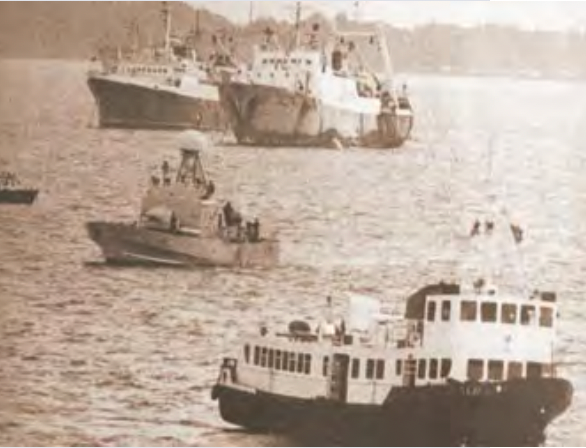The Bukom Bombers
The Bukom Bombers

In the 1950s and 1960s, Singapore weathered storms from regional hostility and domestic unrest. But a new threat emerged in the 1970s, one that our newly independent country had not encountered, posing a severe test for our security forces. The Laju incident, the first international terrorist attack on our country, was also an example of how events played out in the region could spill over into Singapore.
Four hijackers commandeered an unsuspecting fishing boat in Singapore waters on the morning of 31 January 1974. The four hijackers identified themselves as Hiroshi Kimura and Akira Sato from the Japanese Red Army, and Saleh Salim Ali and Husain Mohammad Saad from the Popular Front for the Liberation of Palestine. The armed foreign men, dubbed the “Bukom bombers”, were retaliating against perceived American imperialism and planned to disrupt the oil supply from Singapore to South Vietnam, in solidarity with revolutionary forces in Vietnam.
The men planted explosives at four oil tanks at the Shell Oil Refinery on Pulau Bukom Besar, but they did not manage to blow up the oil tanks. They then hijacked the ferryboat Laju, taking five crew members on board hostage and ordering them to sail into international waters.
After eight days of stand-off, the hijackers released the hostages in exchange for safe passage out of Singapore to Kuwait, accompanied by a 13-man team of government representatives led by the late President S.R. Nathan, who was then Director of the Security and Intelligence Division at the Ministry of Defence (MINDEF). “What awaited us at the other end was something uncertain,” he recalled. Eventually, the Singaporean team was allowed to return home safely, capping a feat of courage and sacrifice.
 A Navy ship (centre) attempts to stall the terrorists onboard the hijacked Laju (foreground). Image: Onwards and Upwards – Celebrating 40 Years of the Navy.
A Navy ship (centre) attempts to stall the terrorists onboard the hijacked Laju (foreground). Image: Onwards and Upwards – Celebrating 40 Years of the Navy.
If the attack had gone as the attackers planned and destroyed the refinery, the supply of oil to the region would have been severely affected, as Singapore was the world’s third-largest refining centre. Singapore’s reputation as a safe location for foreign investment would have also taken a beating.
The incident was a sharp reminder to the early government of the importance of crisis management. Such incidents were not only difficult to manage but complicated to resolve, raising the need for Singapore to equip ourselves for such situations in the future. The incident also reinforced the need for a deeper pool of trained officers, setting in motion the first intake of full-time Police National Service officers in 1975. This would provide a significant source of manpower for the police should another terrorist incident occur.
The Laju incident highlighted the need for coordinated inter-agency action, setting in motion Singapore’s whole-of-government approach, which refers to the coordination across the public service in crisis management.
It was also a reminder of the need to never be complacent and to always strengthen our security capabilities. “I was personally thankful that the episode had ended without bloodshed, and regarded it as a valuable learning experience for me and all my colleagues in the ministries involved, the security service, the police and the military,” said Mr Nathan.

